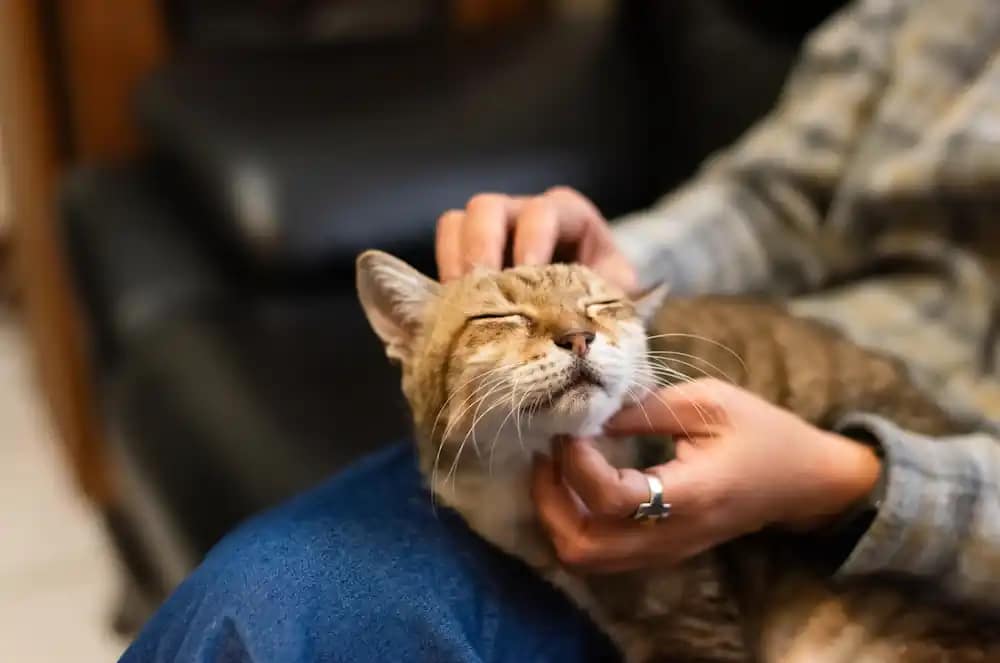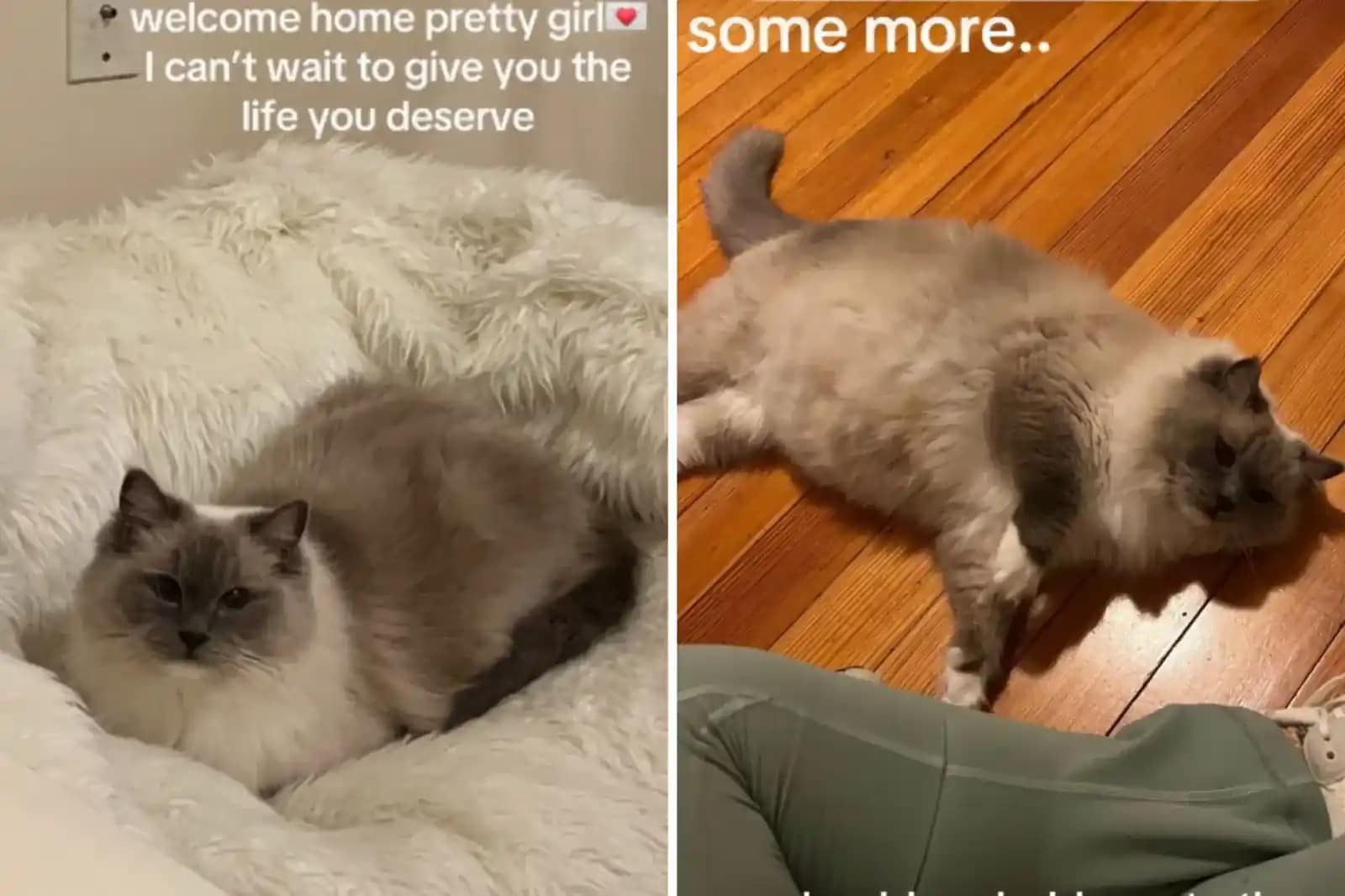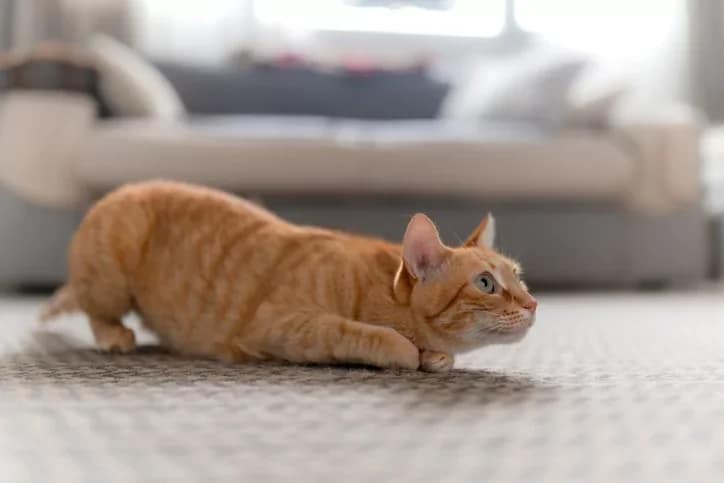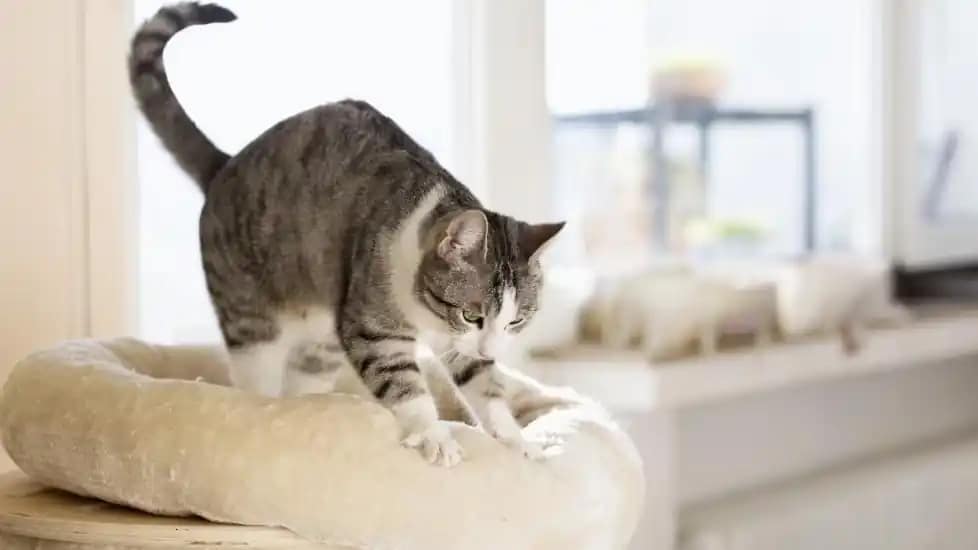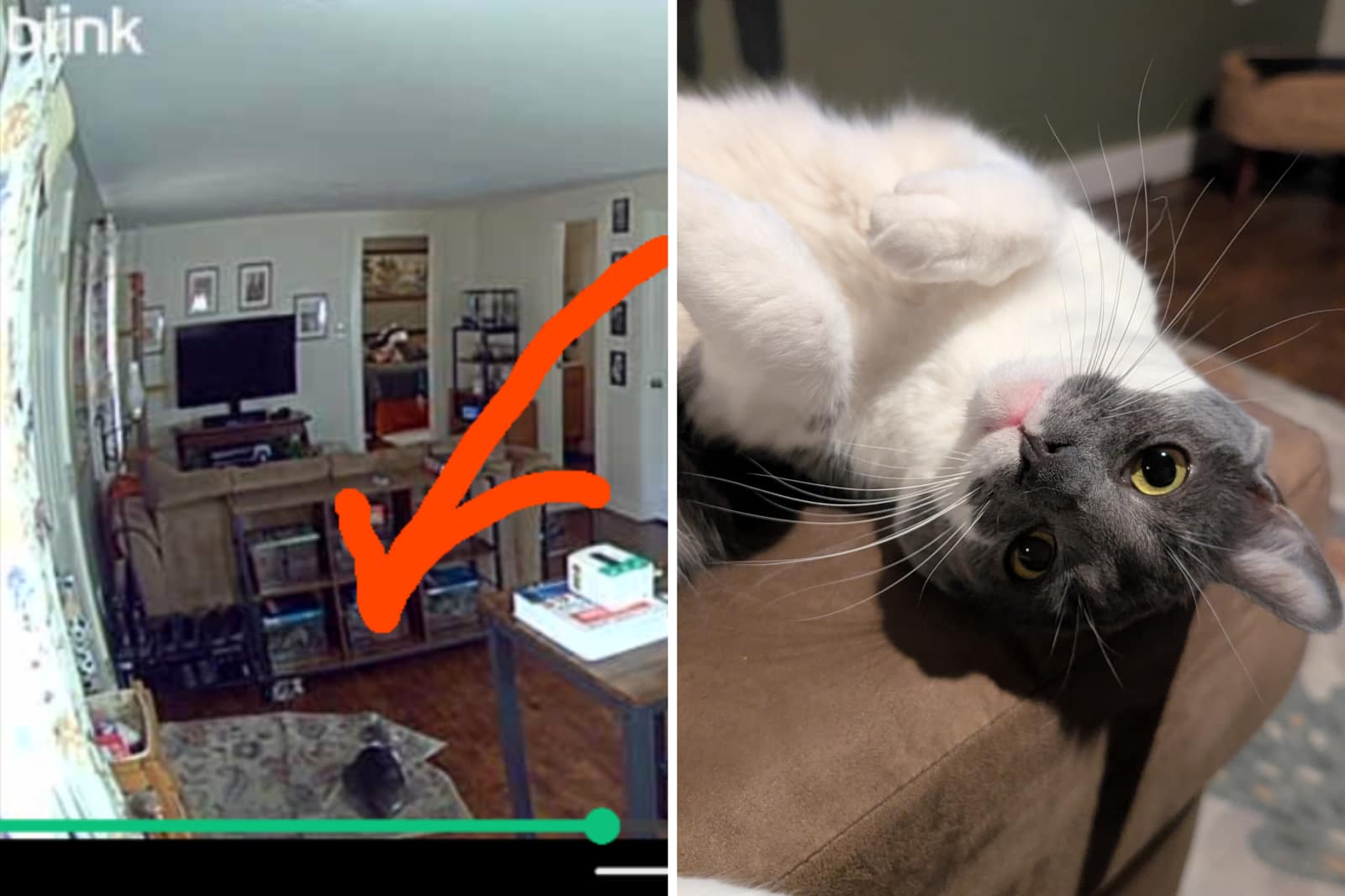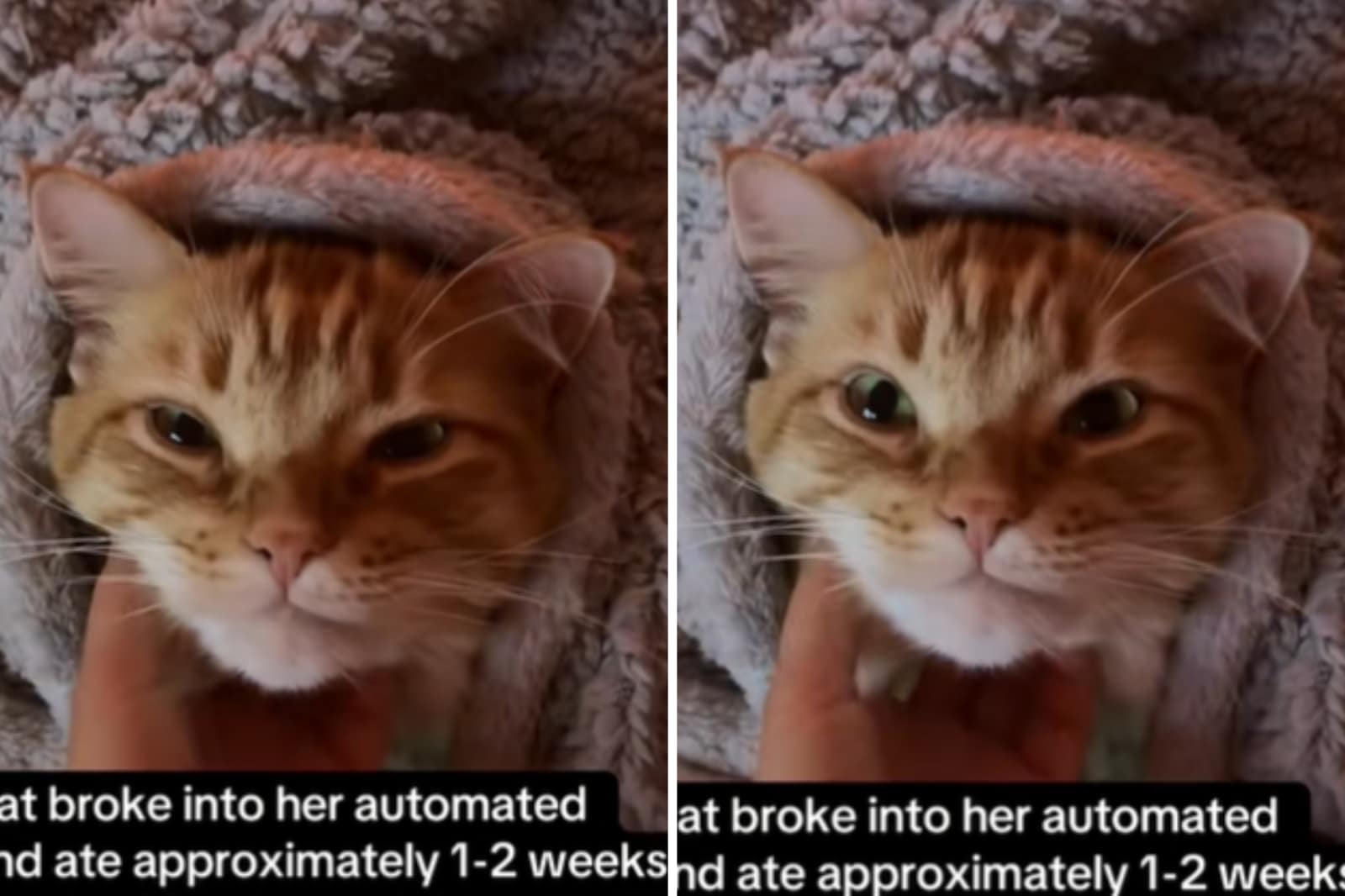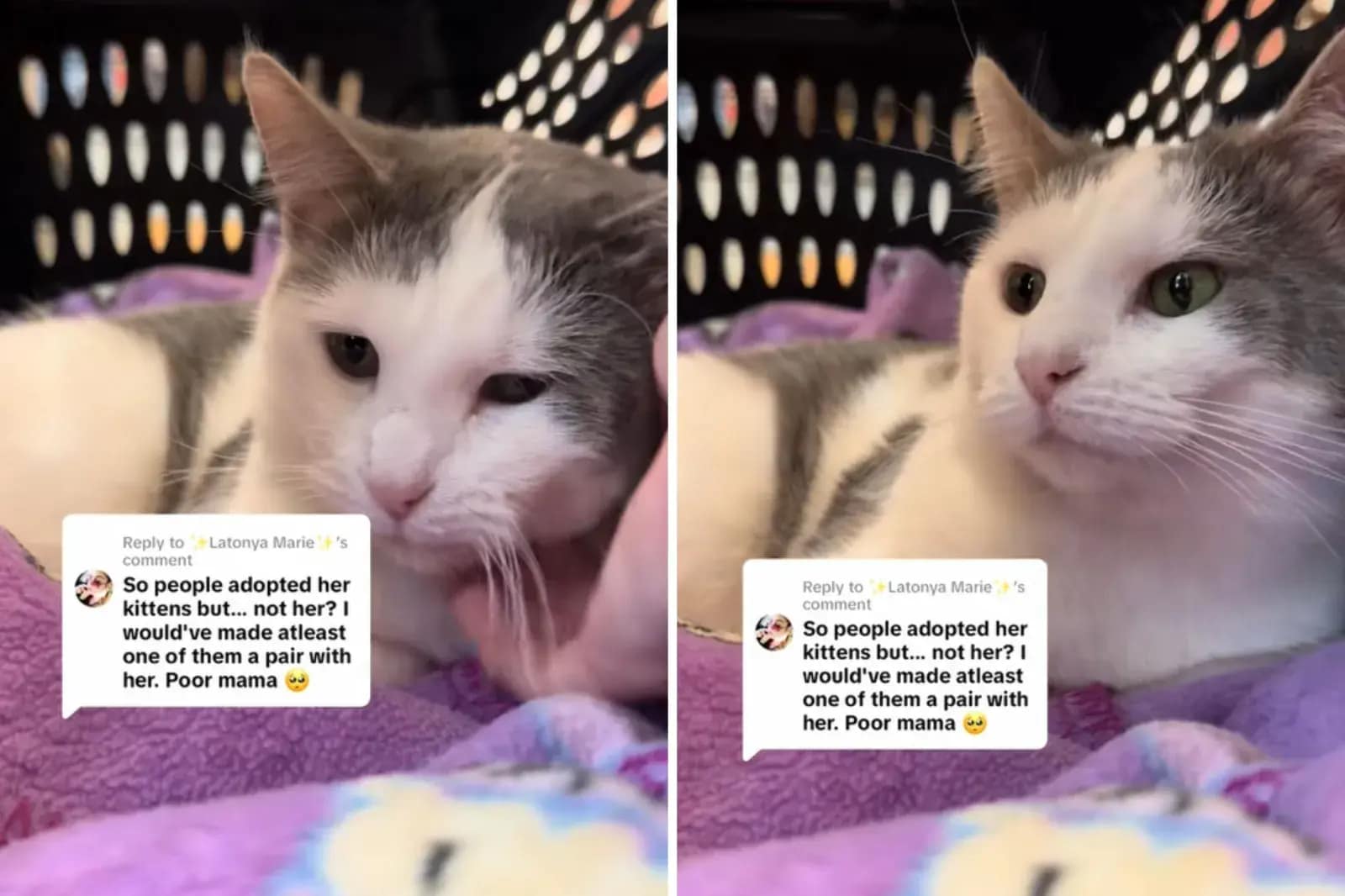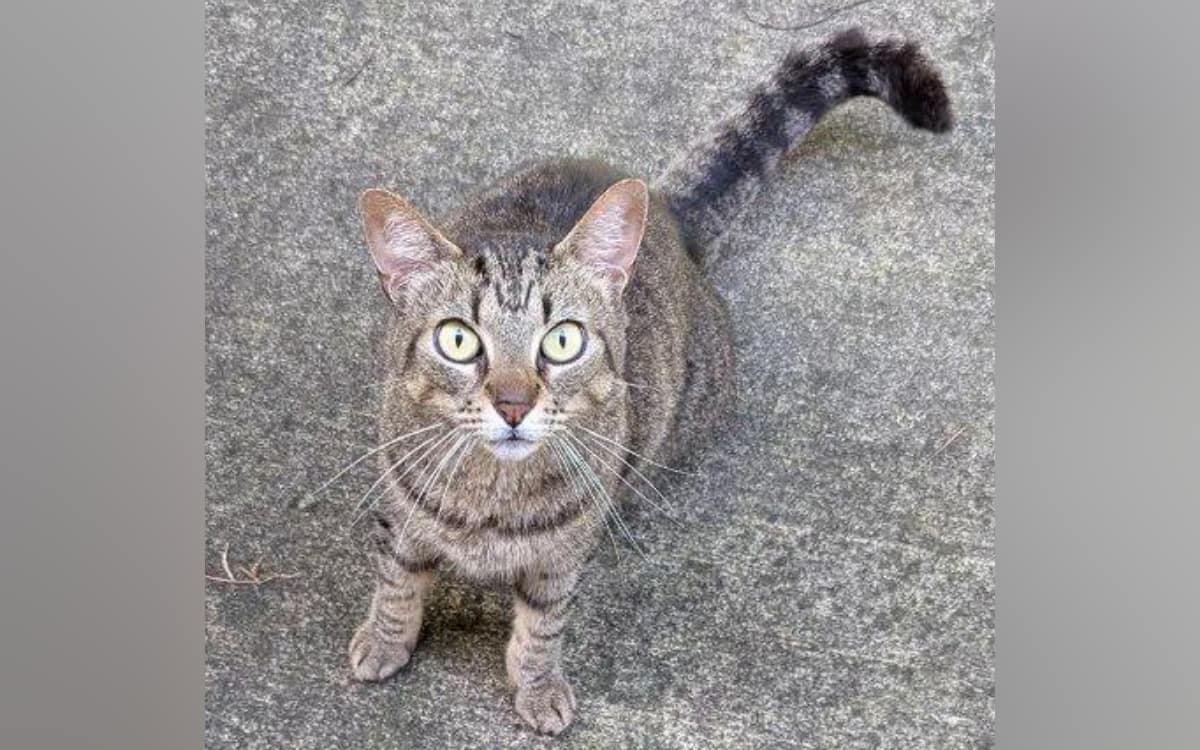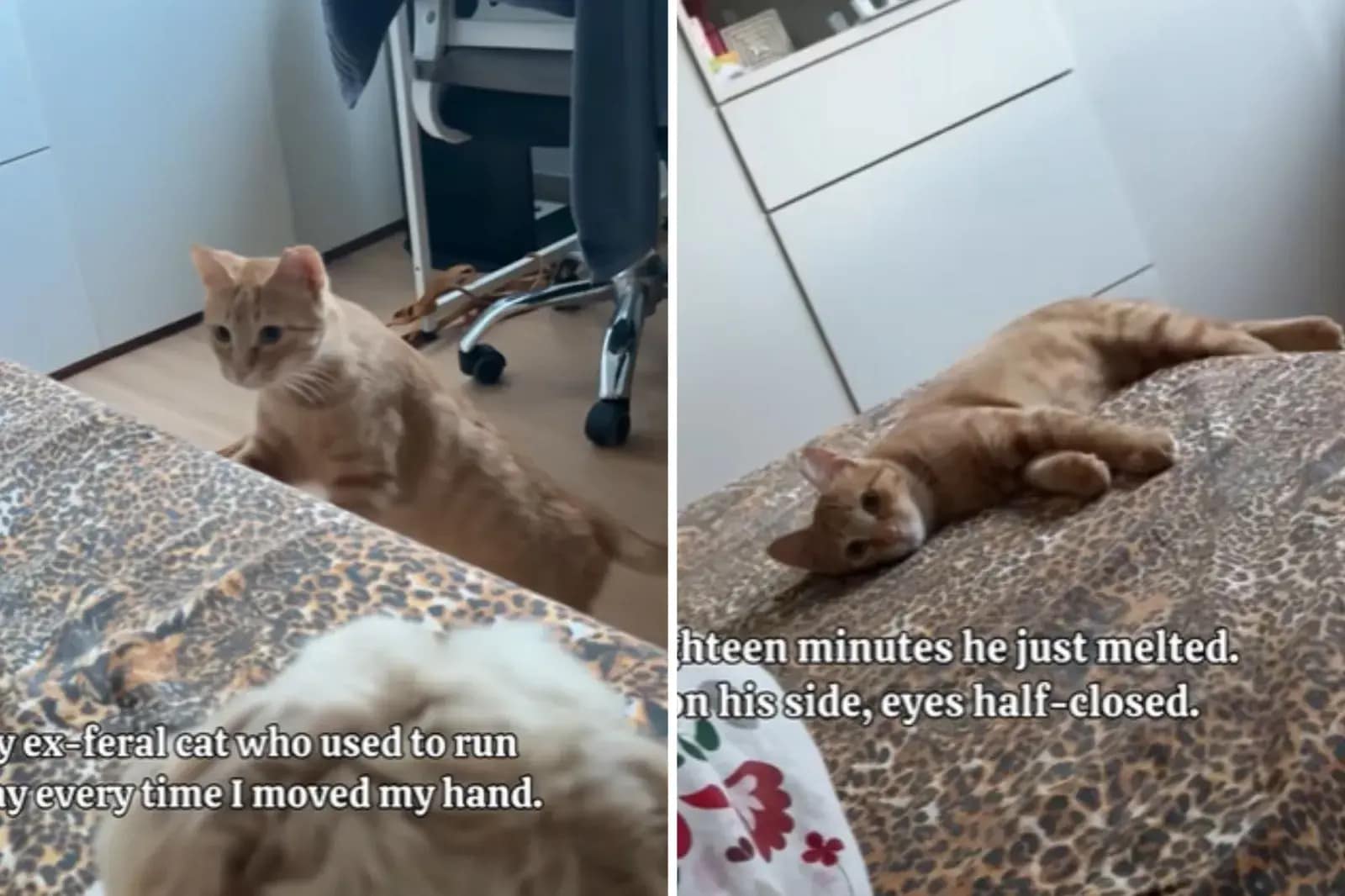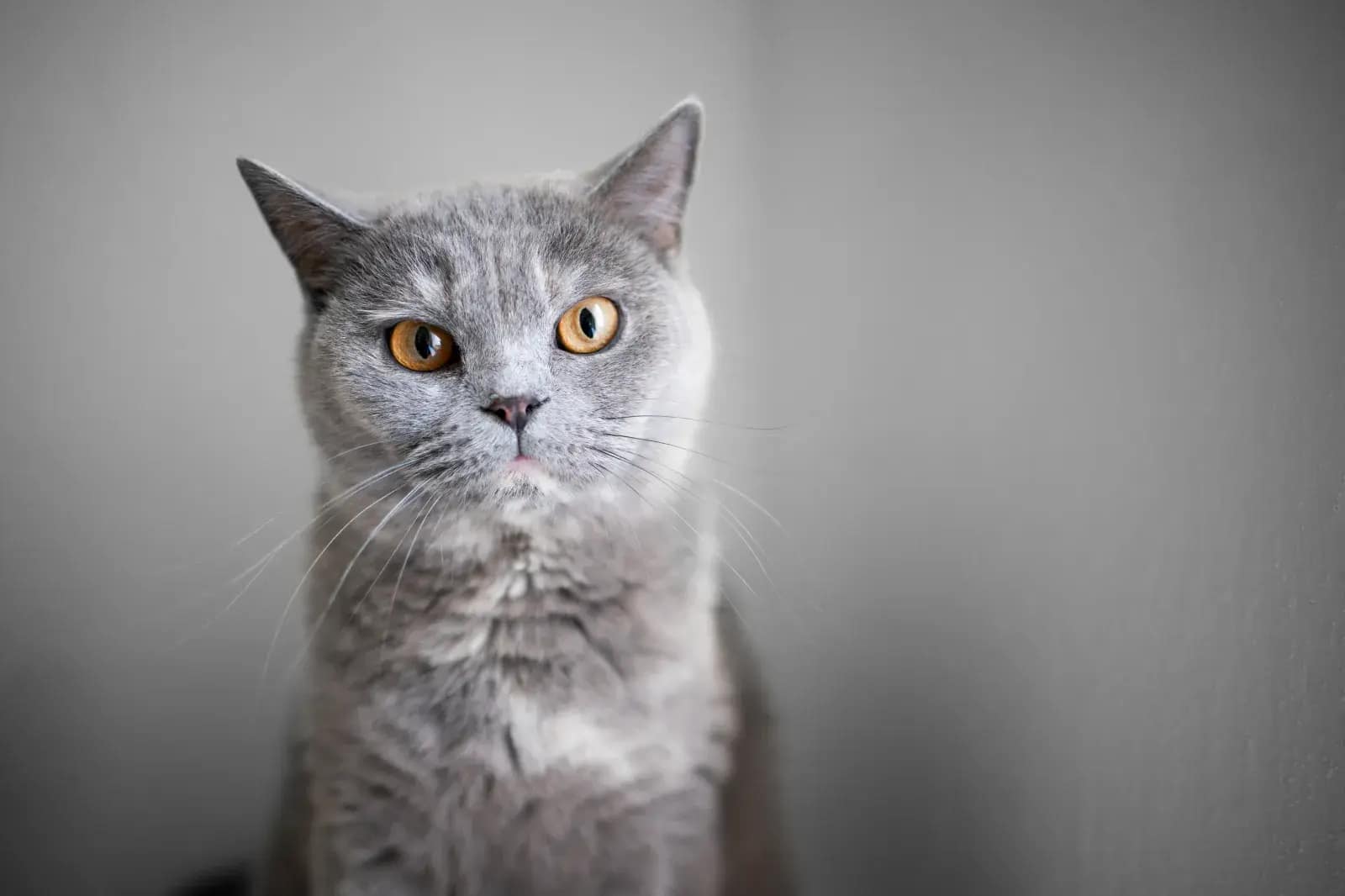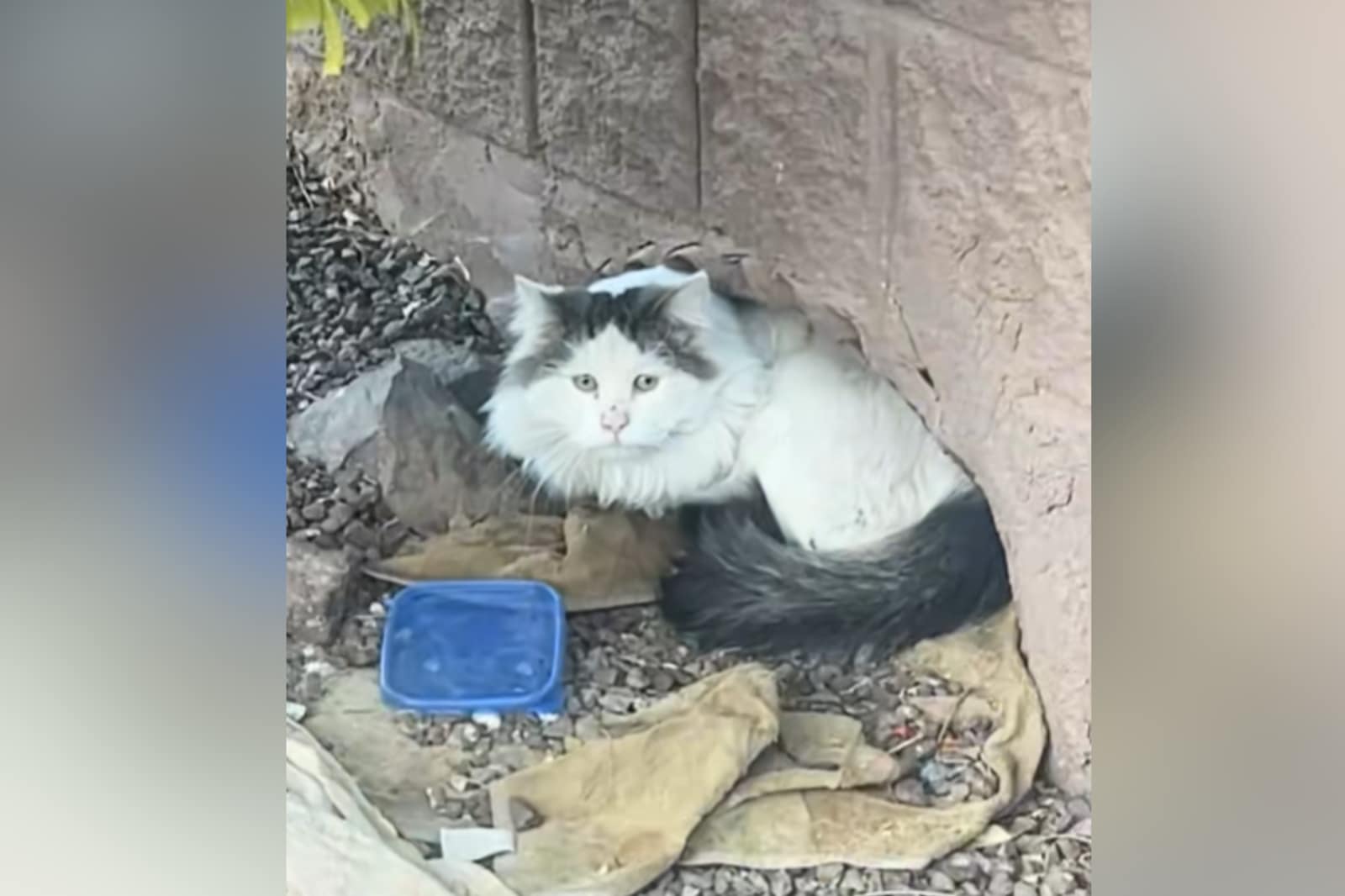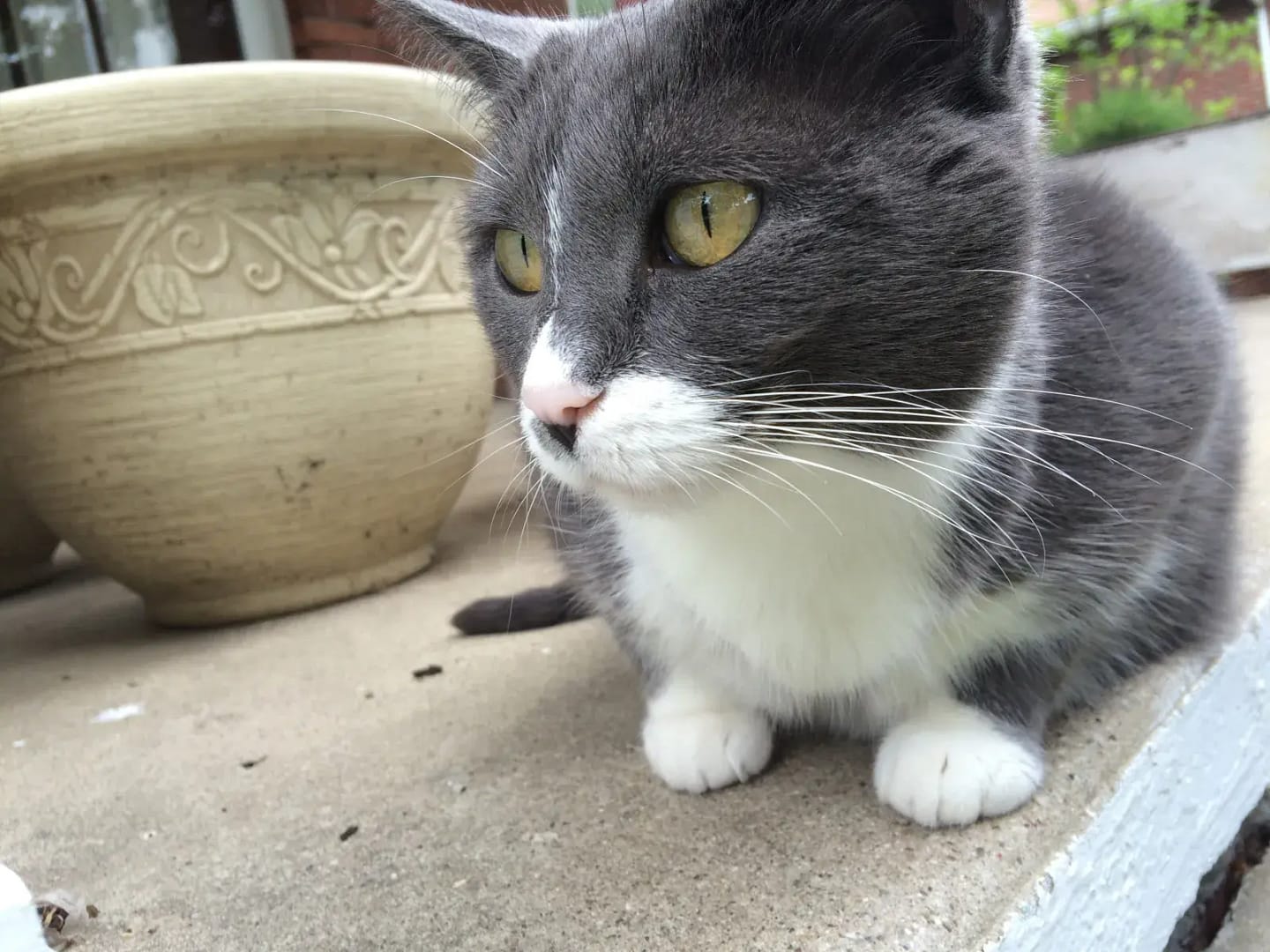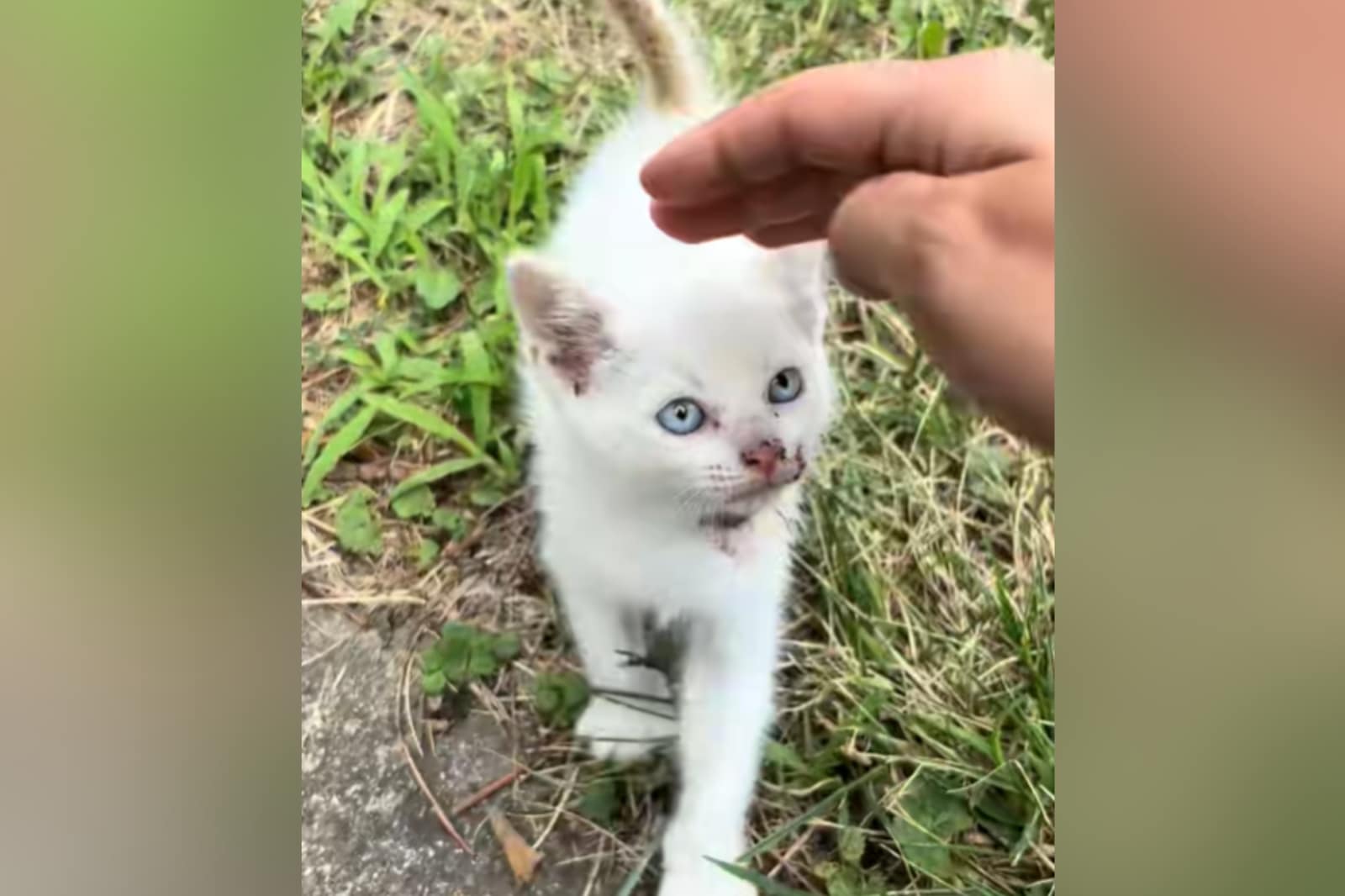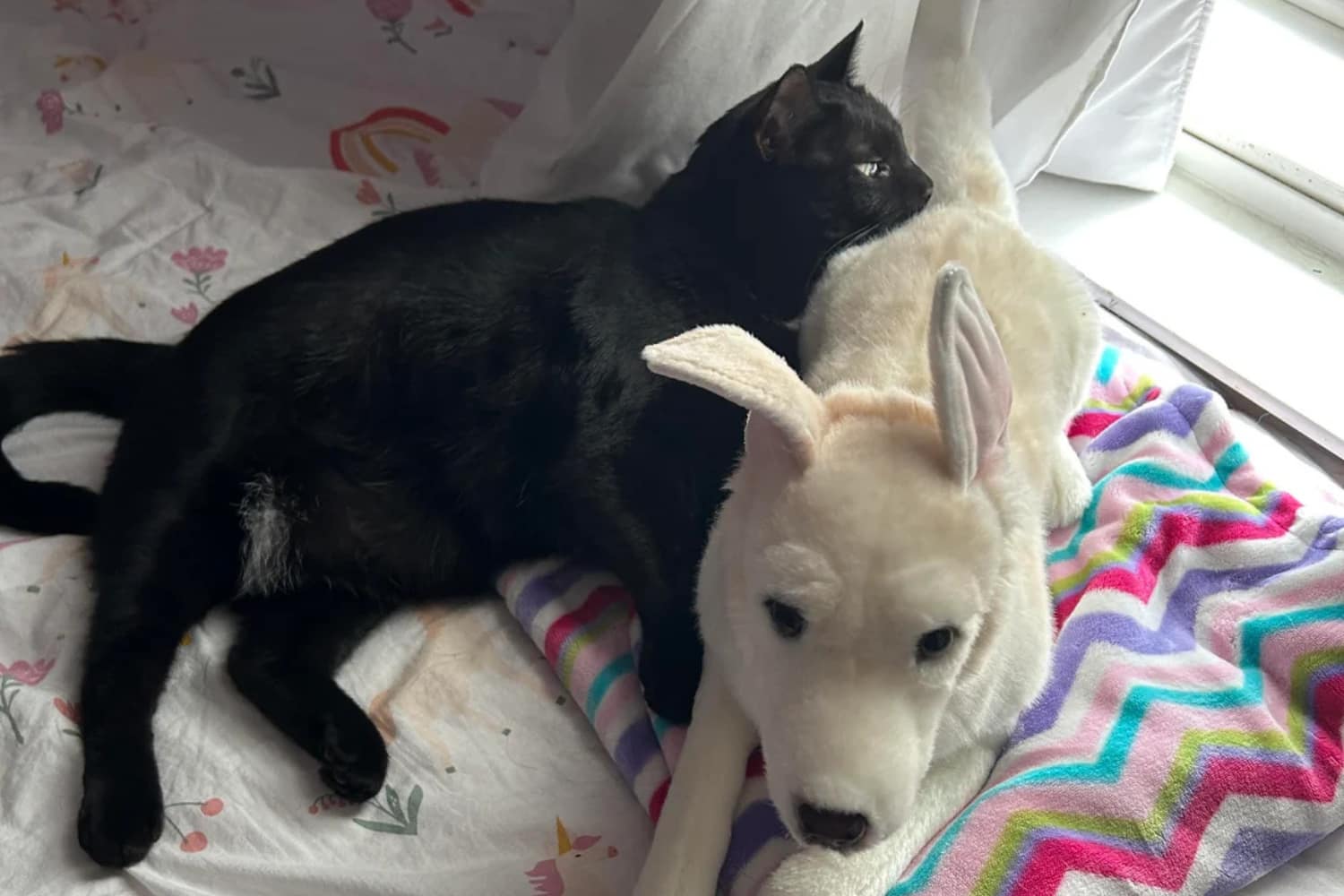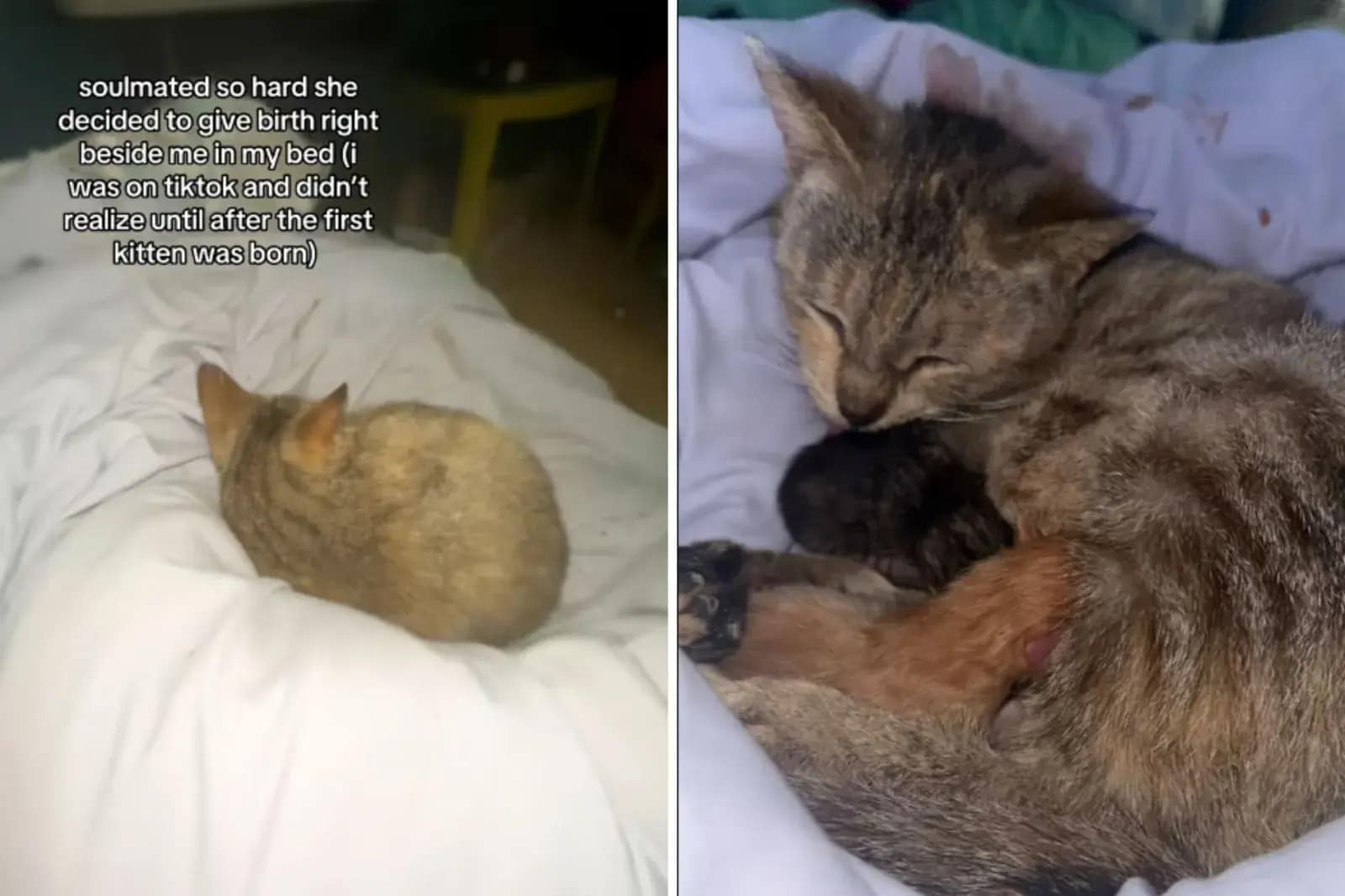Cats exhibit a remarkable diversity in their physical traits—from body shapes and sizes to coat colors—and their individual temperaments. Unlike dogs, they’re often tagged as “distant” or “unsociable” in common comparisons. There’s a well-known quip that sums up this dynamic: “Call a dog, and he’ll rush to your side; call a cat, and they’ll acknowledge the request before circling back on their own time.”
As fellow cat parents, we all know that heart-melting moment when your feline friend curls up on your lap, purring like a tiny motor. But if your cat’s gone from occasional head bumps to full-on velcro mode, you might wonder: Is this normal, or a sign of something more?
Don’t worry—it’s often just your kitty’s way of saying, “You’re my world.” In this guide to cat affection and behavior, we’ll explore why some cats are extra cuddly, how to spot the sweet signs, and when to chat with your vet. Whether you’re navigating cat health news or simply cherishing those snuggle sessions, we’ve got practical insights to keep your bond strong and worry-free.
Principales conclusiones
- Cats express their fondness through diverse behaviors — for instance, nuzzling up to you, trailing your movements, or resting in close proximity.
- Both genetic factors and early social experiences play a role in shaping a cat’s tendency to be cuddly.
- Specific cat breeds are recognized for their more affectionate nature, including Siamese, Ragdolls, and Persians.
- An unexpected surge in a cat’s affectionate behavior can stem from multiple reasons, with underlying health problems being one possibility.
- If your cat grows abnormally clingy or exhibits additional signs like frequent meowing or excessive vocalizing, it’s advisable to book a visit to the veterinarian.
How Cats Whisper “I Love You” in Their Own Furry Way
Cats aren’t always the aloof enigmas pop culture paints them as—they’re just subtle about their affections, especially compared to our tail-wagging dog pals. If your cat’s showering you with love, it’s likely because they’ve learned that closeness with you means comfort, play, and yes, even the occasional treat. Building that human-cat bond takes time, but once it’s there, the rewards are endless.
Here are some classic ways our cats express their adoration—watch for these to feel even more connected:
- Rubbing and Arching: That leg weave or cheek press? It’s scent-marking you as family, a ultimate trust signal.
- Vocal Vibes: Meows, purrs, or those adorable trills are their love language, often ramping up when you’re home.
- Touchy-Feely Moments: Paw pats or headbutts invite pets, showing they’re craving your gentle strokes.
- Shadowing Shenanigans: Trailing you room to room? You’re their favorite adventure buddy.
- Cozy Companionship: Lounging beside (or boldly on) the couch or bed means they feel safe and cherished with you.
Quick Fact: Cats spend up to 70% of their day sleeping, so those nap-time nestles are peak affection hours—perfect for bonding without the zoomies.
The Roots of Cuddliness: Genetics, Upbringing, and Your Special Bond
Experiences as a kitten
Ever catch yourself thinking, “My cat’s affection levels are off the charts—did I win the kitty lottery?” You’re not alone.
Animal behavior experts note that a cat’s tendency to cuddle stems largely from early social interactions with humans as a kitten.A cat’s snuggly side stems from a mix of nature and nurture.
People who regularly care for kittens regularly pet and stroke them. This practice not only makes it easier for kittens to get veterinary care when needed but also fosters a desire to spend cuddle time with their human companions.
Therefore, socialization in those early kitten weeks plays a huge role: Kittens handled gently by humans grow into adults who seek out our company like pros.
Genetics and personality
Genetics add another layer of charm. Research shows that a kitten’s dad’s personality influences their sociability—a friendly father leads to friendlier offspring. In one study from Applied Animal Behaviour Science (1995), kittens sired by outgoing toms were bolder and more people-oriented, especially when paired with positive early experiences. Solo cats in single-pet homes might amp up the clinginess too, turning to you for all their social and play needs.
As cat parents, we can nurture this by offering consistent, calm interactions—think short play sessions with wand toys or quiet reading time together. It’s all about reinforcing that “you = good feels” equation.
Breeds That Crave Your Lap
If breed plays into your cat’s lovebug status, you might have one of these attention-loving lines. These varieties were bred for companionship, blending stunning looks with a knack for melting hearts. Here’s a roundup of top clingy cat breeds, complete with why they’re pet-parent favorites:
- Siamés: Vocal virtuosos who chat all day and shadow you like a furry detective—ideal for chatty households.
- Ragdolls: Named for their floppy, relaxed cuddles; they go limp in your arms, pure bliss for lap lovers.
- Persas: Plush and pampered, these gentle giants prefer serene snuggles over wild antics.
- Balinés: Sleek Siamese cousins with a silky coat and endless devotion, always up for a stroke session.
- Tonquinés: Playful hybrids (Burmese-Siamese mix) that blend energy with affection, perfect for active families.
- Himalaya: Colorpoint Persians with a calm, loving vibe—think luxurious lounging on your chest.
Pro Tip: No matter the raza, every cat’s unique. If you’re eyeing adoption trends, check out local shelters for these gems—mixes often surprise with extra sweetness.
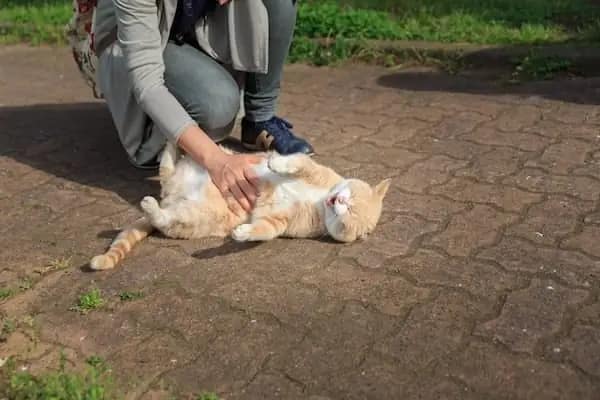
Decoding the Snuggle Surge: Everyday Reasons Your Cat’s Extra Lovey
One day your cat’s independent, the next they’re glued to your side—what gives? Sudden affection spikes are usually harmless (and heartwarming), but tuning into the “why” helps you respond with empathy. Common culprits include:
The Welcome Wagon Effect
If you’ve been away from home for an extended period—whether for a work trip, vacation, or other commitments—your cat is likely to show heightened affection toward you in the days following your return.
This sweet display of attachment can manifest in various endearing ways: they might trail closely behind you from room to room, weaving between your legs as you move about, or let out soft, insistent meows that feel like gentle calls for your attention.
Some cats may also press their bodies against yours, rub their cheeks on your hands, or even curl up beside you more often than usual, as if making up for the time you spent apart by staying as close as possible.
Mealtime Magic
Many felines display remarkable levels of warmth and affection when mealtime rolls around.
Driven by their natural hunger cues, these clever creatures have gradually figured out that certain actions—like letting out soft or insistent meows, nuzzling your hands or legs gently, or rubbing their bodies against you repeatedly—are highly effective at getting their human companions to serve up their favorite food during those regular daily windows.
Over time, this behavior becomes a learned routine: they associate the anticipation of eating with interacting with you in these affectionate ways, turning mealtime into not just a feeding ritual but also a sweet moment of connection between cat and owner.
Seasonal Shifts
Female cats that haven’t been spayed tend to show noticeably increased affectionate tendencies when they enter their heat cycle.
This surge in loving behavior isn’t limited to a single target — it often extends to their human caregivers, whether that means extra headbutts, persistent purring, or seeking constant physical contact.
Additionally, these affectionate gestures may also be directed toward other animals in the home, such as fellow cats, dogs, or even smaller pets, as the hormonal changes during heat drive them to seek connection and interaction with those around them.
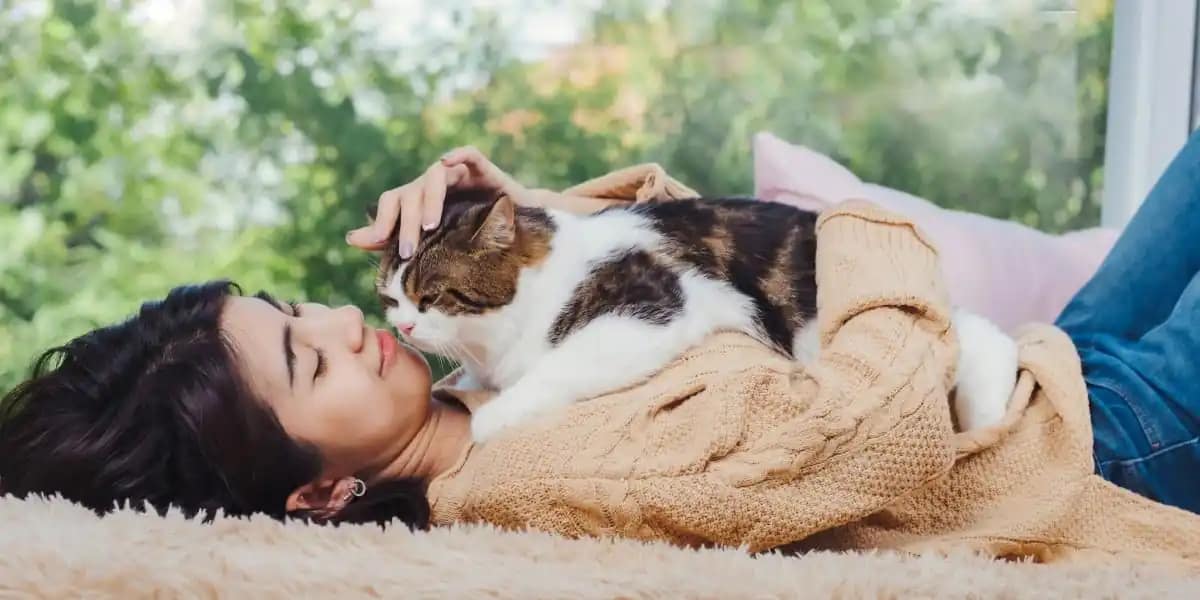
When Cuddles Call for Caution: Spotting Health Hints in Affection
We adore our cats’ loving ways, but as responsible pet parents, it’s wise to pause if affection amps up overnight alongside other quirks. A clingy cat could be craving comfort from discomfort—think increased thirst, weight loss, or restlessness.
For example:
- Hyperthyroidism: Common in seniors, it boosts energy and vocal pleas, mimicking extra love but needing thyroid checks.
- Diabetes: Constant hunger drives more “feed me” snuggles; early vet intervention keeps it manageable.
- Aging Aches: Older cats might seek reassurance amid cognitive shifts or hypertension—gentle exams catch it early.
If your cat’s vocalizations spike or they’re unusually needy, book that vet visit pronto. It’s not overreacting; it’s proactive cat health news that extends those cuddle years. Tools like at-home thyroid tests or senior wellness plans can make monitoring a breeze.
How Can I Get a Cuddly Cat?
When bringing a kitten into your home, there’s no sure way to predict just how cuddly they’ll become as an adult — but investing in thoughtful, consistent socialization from an early age lays a strong foundation for them to develop into a friendly, well-adjusted companion.
A cat’s willingness to snuggle and engage in physical affection as they mature is also shaped significantly by how you interact with and handle them day-to-day.
This includes respecting their personal space instead of forcing contact, allowing them to initiate interactions on their own terms, and ensuring any kids in the household learn to handle the kitten gently, without pulling tails, grabbing paws, or overwhelming them.
All of these practices play a key role in fostering trust and comfort, which in turn boosts the chances that your cat will actively seek out interaction and cuddles with you.
Adopting a cuddly adult cat
It’s truly impossible to foresee a cat’s exact demeanor once they join your household, but opting for an adult cat—whose temperament is fully formed—could be a wise choice. Adult cats who show cuddly behavior in a shelter or their prior living situation are far more prone to being affectionate with you too.
When you visit a shelter cat, signs like them winding around your feet, jumping onto your lap, or nuzzling your head are strong clues that you’re interacting with a loving feline.
A number of shelters now use the ASPCA’s Meet Your Match Feline-ality Adoption Program. This research-backed initiative pairs cats with distinct personalities with adopters whose own traits and lifestyles align best with theirs.
Cats aged 9 months and older go through an evaluation process. This assessment helps forecast how each cat will likely act in their new home. There are nine distinct Feline-alities: from the energetic “Party Animal” and “Leader of the Band” to the companionable “Sidekick” and “Personal Assistant,” who thrive on being around their humans.
If a cuddly companion is what you’re after, the “Love Bug” Feline-ality is worth considering—these are lap cats that adore being petted, love to purr, and cherish time spent together.
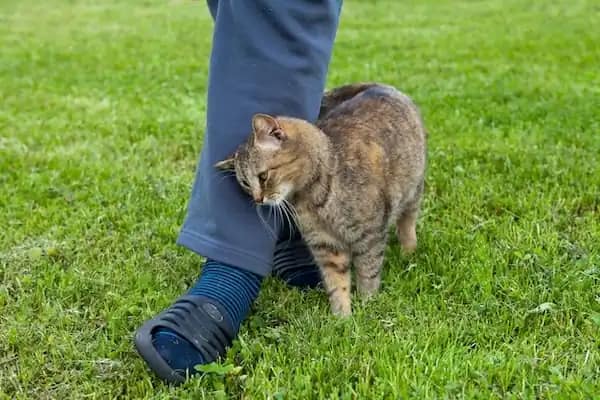
Why Is My Cat Cuddlier at Night?
You might notice that your feline companion tends to show more physical affection—like nuzzling, curling up beside you, or seeking lap time—during specific windows of the day. There’s no one definitive explanation for this pattern of behavior.
It could tie back to their natural energy levels or how drowsy they’re feeling at a given moment, or even small shifts in environmental temperature.
A common observation among cat owners is that their pets grow noticeably cuddlier when the weather turns cold. This suggests cats often seek out human contact not just for affection, but also as a way to stay warm—using our body heat as a cozy, reliable source of comfort.”
Additionally, cats are more inclined to seek out cuddles when you’re in a calm, stationary state. Whether you’re winding down in bed at night, settled on the couch to watch TV, or even just sitting quietly with a book, your stillness signals to your cat that you’re a safe, inviting spot to snuggle up.
Their preference for these low-key moments likely stems from their instinct to avoid chaos; a relaxed, motionless human feels like a secure space to bond without distractions.
Cherish and Care for Your Cat’s Love
Your cat’s cuddly quirks? They’re a testament to the deep, trusting bond you’ve built—one that outshines any aloof stereotype.
From genetic gifts to learned loyalties, affection in cats is as varied as their purrs, but always rooted in feeling safe with you.
Key takeaway: Lean into the love with daily rituals like brush sessions or window perches, but stay vigilant for changes. Your furry family member deserves the best, and spotting the sweet from the serious keeps tails (and hearts) high.
PREGUNTAS FRECUENTES
Are cuddly cats a sign of a strong bond?
Absolutely—it’s your cat’s way of saying you’re their safe haven. Reciprocate with calm pets to deepen that trust.
Why does my cat get extra clingy at night?
Nocturnal by nature, they sync with your wind-down routine. A single-cat home amps this; try bedtime toys for independent fun.
Can spaying change my cat’s affection levels?
Post-spay clinginess often ties to recovery discomfort—monitor for pain and consult your vet for meds if needed.
Is sudden affection ever a health red flag?
Yes, paired with symptoms like weight loss or thirst, it could signal issues like diabetes. A check-up ensures it’s just love.
How can I encourage more cuddles from a shy cat?
Start slow with treats during quiet times and respect their space—patience turns wallflowers into lap cats.

